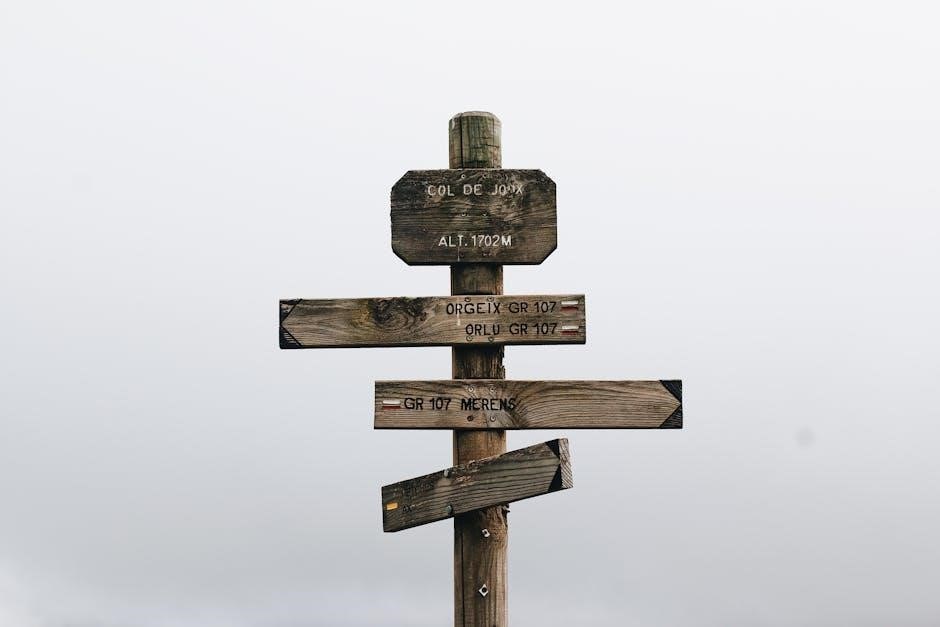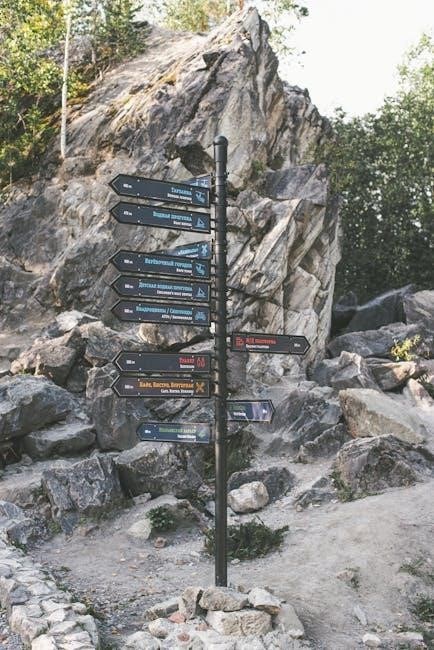andrew biel trail guide to the body

Trail Guide to the Body by Andrew R. Biel is a renowned textbook for learning musculoskeletal anatomy and palpation techniques. Its detailed illustrations and clear instructions make it essential for students in massage therapy, physical therapy, and other health professions, providing a comprehensive understanding of the human body.
Overview of the Book

Trail Guide to the Body by Andrew R. Biel is a comprehensive guide designed to help students and professionals master musculoskeletal anatomy and palpation techniques. Its clear, user-friendly approach provides detailed information on locating and identifying muscles, joints, and ligaments. The book is richly illustrated with lifelike drawings that enhance understanding and make complex concepts accessible. It serves as an essential resource for massage therapists, physical therapists, and students in bodywork and healthcare professions. The text emphasizes practical application, enabling readers to develop the skills needed for accurate assessments and treatments. With its focus on precision and clarity, Trail Guide to the Body has become a cornerstone in anatomy education, widely praised for its effectiveness in teaching palpation and musculoskeletal anatomy.
Author Background: Andrew R. Biel
Andrew R. Biel is a licensed massage practitioner with extensive experience in bodywork and anatomy education. His passion for understanding human movement and structure led him to create Trail Guide to the Body, a groundbreaking textbook that has revolutionized the way musculoskeletal anatomy is taught. Biel’s expertise in palpation and his ability to simplify complex anatomical concepts have made his work indispensable to students and professionals in massage therapy, physical therapy, and sports medicine. His dedication to education and his innovative approach to teaching anatomy have earned him widespread recognition and acclaim in the field of health sciences.
Structure of the Book
Trail Guide to the Body is meticulously organized, featuring detailed illustrations and clear headings that guide readers through complex anatomical concepts with ease and precision.
Organization of Content
Trail Guide to the Body is structured to facilitate easy learning, with content organized by regional anatomy. Each chapter focuses on specific body regions, such as the upper limb or pelvic girdle, providing in-depth details about muscles, bones, and joints. The book begins with foundational concepts, progressing to more complex topics, ensuring a logical flow. Muscle-specific sections include origin, insertion, and palpation techniques, making it user-friendly. The text is complemented by detailed illustrations, reinforcing anatomical understanding. Supplementary resources like flashcards and a workbook enhance retention. This systematic approach ensures readers can locate and identify muscles with precision, making it an invaluable resource for anatomy education and practical application.
Visual Elements and Illustrations

Trail Guide to the Body is renowned for its exceptional visual elements, which play a crucial role in facilitating anatomical understanding. The book features detailed, lifelike illustrations that accurately depict the musculoskeletal system, allowing readers to visualize complex structures with clarity. Color-coded diagrams and cross-sectional views enhance comprehension, while precise labels ensure easy identification of muscles, bones, and joints. The illustrations are carefully integrated with the text, creating a seamless learning experience. Robin Dorn’s artwork is particularly praised for its accuracy and aesthetic appeal, making the book both informative and visually engaging. These visual aids are instrumental in helping readers master palpation techniques and develop a deeper appreciation for human anatomy;
Key Concepts Covered
Trail Guide to the Body focuses on musculoskeletal anatomy, palpation techniques, and the muscular system, providing a comprehensive understanding of the human body’s structure and movement mechanisms.
Musculoskeletal Anatomy
Trail Guide to the Body offers an in-depth exploration of musculoskeletal anatomy, detailing the structure and function of bones, joints, ligaments, and muscles. It provides clear, accessible information on how these components interact, enabling readers to understand the foundation of human movement. The book’s detailed illustrations and descriptions help learners identify and locate anatomical structures with precision, making it an invaluable resource for both students and professionals. By focusing on the interconnections of the musculoskeletal system, Andrew Biel creates a comprehensive guide that enhances anatomical knowledge and practical application in fields like massage therapy, physical therapy, and sports medicine.
Palpation Techniques

Trail Guide to the Body excels in teaching palpation techniques, enabling readers to locate and assess muscles, tendons, and ligaments with precision. The book emphasizes the importance of manual skills in understanding soft tissue structures, providing step-by-step guidance for accurate palpation. Through detailed illustrations and clear instructions, it helps practitioners develop the ability to identify anatomical landmarks and distinguish between various tissues. This skill is crucial for massage therapists, physical therapists, and bodyworkers to effectively assess and treat clients. By mastering these techniques, professionals can enhance their diagnostic accuracy and improve treatment outcomes, making Trail Guide to the Body an indispensable resource for hands-on practitioners in the field of manual therapy.
Muscular System and Joint Movements
Trail Guide to the Body provides an in-depth exploration of the muscular system and its role in joint movements. The book details the structure and function of muscles, tendons, and ligaments, explaining how they work together to facilitate movement. It offers a clear understanding of how muscles contribute to joint stability and mobility, making it an essential resource for students and professionals. The text is supported by detailed illustrations that visually guide readers through the complexities of musculoskeletal anatomy. By mastering this knowledge, practitioners can better assess and address movement-related issues, enhancing their ability to treat clients effectively. This section is vital for anyone seeking to deepen their understanding of human movement and its underlying anatomical mechanisms.

Target Audience
Trail Guide to the Body is designed for massage therapy professionals, physical therapy students, and those in sports medicine and occupational therapy, providing essential anatomical knowledge for effective practice.
Massage Therapy and Bodywork Professionals
Trail Guide to the Body is an indispensable resource for massage therapy and bodywork professionals, offering clear, practical guidance on musculoskeletal anatomy and palpation. Its detailed illustrations and user-friendly format enable practitioners to locate and assess muscles with precision, enhancing their ability to deliver effective treatments. The book’s focus on manual therapy techniques makes it a cornerstone for professionals seeking to deepen their understanding of the human body. By mastering the content, therapists can improve their skills in identifying and addressing musculoskeletal imbalances, ultimately providing better care for their clients. This textbook is widely regarded as the gold standard in its field, transforming complex anatomy into accessible knowledge.
Physical Therapy, Occupational Therapy, and Sports Medicine Students
Trail Guide to the Body is a vital resource for students in physical therapy, occupational therapy, and sports medicine, providing a comprehensive understanding of musculoskeletal anatomy and palpation. Its clear instructions and detailed illustrations make complex concepts accessible, enabling students to master the skills needed for clinical practice. The book’s focus on manual therapy techniques aligns perfectly with the requirements of these fields, preparing students for hands-on patient care. By studying this guide, future professionals gain the ability to accurately assess and treat musculoskeletal injuries and conditions, making it an essential tool for their education and career development.
Supplementary Resources
Trail Guide to the Body Flashcards and a Student Workbook complement the textbook, offering interactive tools for mastering musculoskeletal anatomy and palpation techniques effectively.
Trail Guide to the Body Flashcards
The Trail Guide to the Body Flashcards are an essential study tool for mastering musculoskeletal anatomy. Available in two volumes, they cover the skeletal, muscular, and connective tissue systems. Volume 1 focuses on the skeletal system, joints, ligaments, and body movements, while Volume 2 details the muscles of the body. These flashcards are beautifully illustrated and designed to complement the textbook, providing a hands-on learning experience. They are particularly useful for students preparing for exams or professionals seeking to reinforce their knowledge. With clear, concise information and vivid visuals, the flashcards are a popular resource among massage therapy, physical therapy, and sports medicine students. They are widely regarded as a valuable supplement to the main textbook.
Student Workbook and Study Materials

The Trail Guide to the Body Student Workbook is a companion resource designed to enhance learning and retention. Packed with exercises, review questions, and labeling activities, it reinforces key concepts from the main textbook. The workbook is tailored for students in massage therapy, physical therapy, and other bodywork professions, offering practical tools to master musculoskeletal anatomy. It includes muscle identification exercises, palpation techniques, and joint movement activities, all aligned with the textbook’s content. Additional study materials, such as online resources and interactive exercises, further support students in their academic journey. This workbook is an invaluable supplement for anyone seeking to deepen their understanding of the human body and its structures.

Impact and Reception
Trail Guide to the Body is widely acclaimed as a gold-standard textbook, praised for its detailed illustrations and clear instructions, making it indispensable in anatomy education.
Popularity and Critical Acclaim
Trail Guide to the Body has earned widespread recognition as a gold-standard textbook for musculoskeletal anatomy and palpation. Its clear, concise language and lifelike illustrations have made it a favorite among students and professionals alike. The book’s ability to simplify complex anatomical concepts has contributed to its popularity in fields like massage therapy, physical therapy, and sports medicine. Critics praise its user-friendly design and detailed visual aids, which enhance learning and retention. Its acclaim extends to its role in transforming anatomy education, providing a hands-on approach that bridges theory and practice. Supplementary resources, such as flashcards and workbooks, further enhance its utility, solidifying its reputation as an indispensable tool for anatomy education.
Role in Anatomy Education
Trail Guide to the Body has become a cornerstone in anatomy education, transforming the classroom into a dynamic learning environment. Its detailed illustrations and clear instructions enable students to master musculoskeletal anatomy and palpation skills with ease. The book’s effectiveness lies in its ability to bridge theory and practice, making it an indispensable resource for massage therapy, physical therapy, and sports medicine students. Its comprehensive approach prepares learners for real-world applications, ensuring a deep understanding of human anatomy. This textbook’s innovative design and practical focus have solidified its reputation as a gold-standard resource, shaping the education of countless professionals in the health and wellness fields.



Leave a Reply
You must be logged in to post a comment.